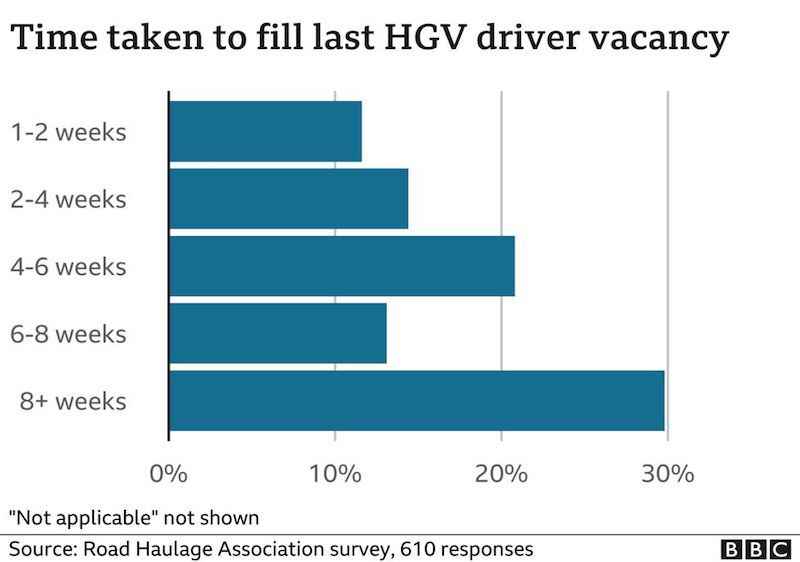UK driver shortages – what your business can do about it

Lorry driver shortages have made headlines recently, since Nationwide Produce discovered that fresh produce ready to supply UK supermarkets is being dumped because of driver shortages.
The logistics industry, which many retailers and especially those that sell groceries heavily depend on, is dealing with an estimated shortfall of 100,000 HGV drivers.
Many businesses are blaming this shortage on Brexit, as many of their drivers were foreign nationals from European countries, and have now returned to the EU.
This has been exacerbated by drivers not being incorporated into the UK Government’s list of skilled labour. Meaning new arrivals into this industry need additional immigration paperwork.
Furthermore, the pandemic resulted in the loss of a year’s worth of driver training and testing. This came at a time when online retail averaged 28.1% of retail sales in the UK, up from 19.2% in 2019. An increase that resulted in even more demand for delivery drivers.
The result is a lengthened period of time to fill driver positions, and a general shortage of drivers throughout the UK.

The Road Haulage Association (RHA) is claiming that driver shortage is now hitting crisis level in the UK. And has called on the Government to introduce measures to intervene, urgently.
If you are a business dealing with a driver shortage, there are processes you can put in place to begin to tackle this problem. Instead of having to wait for the government to intervene.
Reduce daily mileage
Key to dealing with driver shortages is requiring fewer drivers.
With the use of route optimisation, your business can deliver more with less resource, and in less time.
This is because route optimisation technology quickly generates the most efficient route sequences, taking into account time windows, vehicle types and load capacity.
This has been proven to reduce average daily mileage by an impressive 20%.
Utilise driver app technology
Another tactic for delivering more with less resource is streamlining business processes with the use of technology.
With the use of driver apps, on both iOS and Android devices, you can simplify your operations by automatically routing drivers to their next job.
You can track delivery and driver progress, whilst dealing with any issues and amends in real-time. And delivery and failure notifications are sent directly to the transport office, also in real-time.
Lastly, all manifests are logged on the app, reducing the need for time-consuming, physical paperwork.
Communicate with customers
If your business is dealing with unexpected delays due to driver shortages, it is essential that you keep your end customer as up-to-date as possible with delivery progress.
Technology such as MaxOptra offers advance customer communication tools, allowing you to proactively send out advance email and SMS ETA notifications to regularly keep your customers informed.
And for added peace of mind for both you and your customer, MaxOptra’s ePod app allows drivers to log proof of delivery signatures and photos and comments.
Keep an eye on results
Driver shortages can have a significant impact on end results, so it’s essential that businesses keep an eye on metrics.
With the use of route optimisation technology, businesses can monitor performance in real-time, such as working time utilisation and breaks, stops per route, and mileage and driving time.
Additionally, with the use of reports, businesses can review on-time deliveries and completed jobs, failed orders, cost performance, and driver utilisation.
This helps businesses to understand exactly where resource may be needed or improved.
If you would like to find out how you can tackle a shortage of drivers by doing more with the resource you already have, then get in touch.
Our friendly team of experts are on hand to offer you advice.
Maxoptra System
© MaxOptra, 2023. Privacy Policy and Cookies
